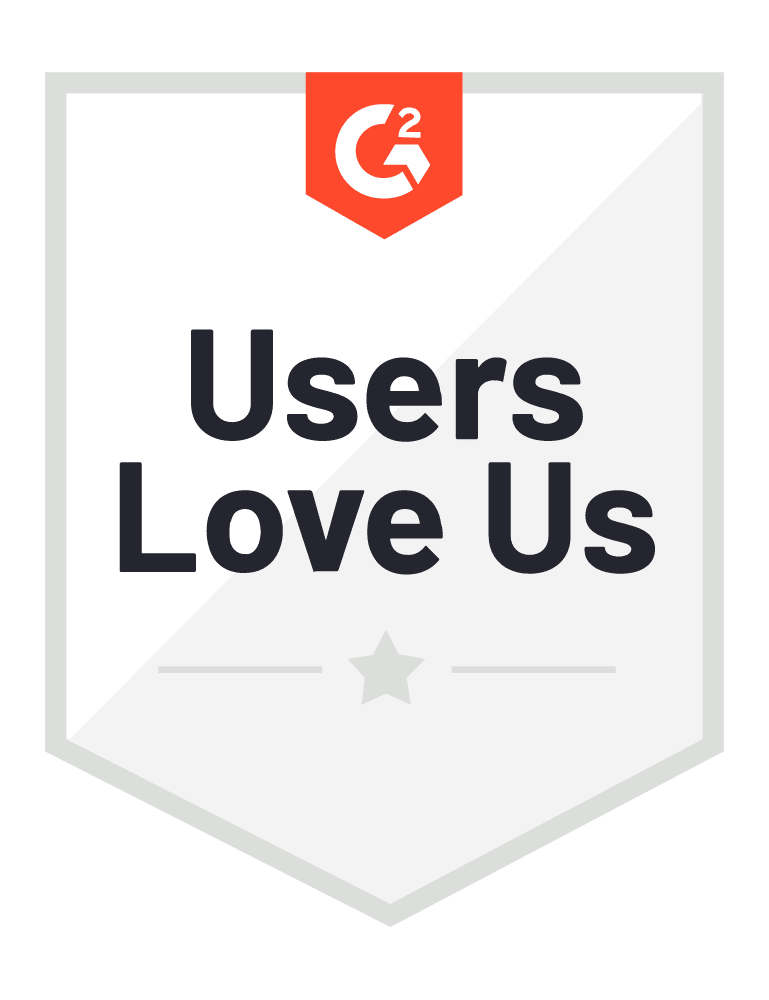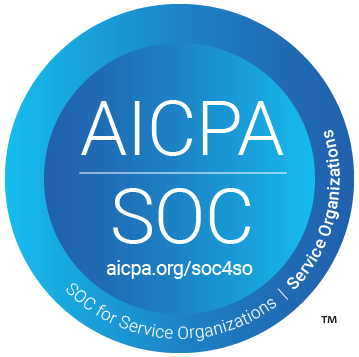- Solutions
-
Products
-
Resources
Sales Automation Tools | Cirrus Insight by Kristi Campbell View all Blog Posts >Get the App, Get the Sidebar, & Get Your Trial Going HereUnleash limitless growth opportunities by partnering with Cirrus Insight.
- Pricing
Filter Knowledge Base by:
Sales Process in Salesforce [Setup, Stages and Features]
A clean sales process in Salesforce helps reps move faster and gives leaders a true view of the pipeline. To get there, you need to understand how stages work and how to set them up the right way.
We've designed this walkthrough to cover the core objects, practical setup steps, and the essential reports that keep everyone aligned.
The goal is simple: work faster without changing how you work.
In this guide, you'll learn about the following:
- What is the sales process in Salesforce?
- The main features of the Salesforce sales process
- Salesforce sales process key stages
- Steps to set up your sales process in Salesforce
- Tips to improve your Salesforce sales process
- Best sales process use case examples
What is the Sales Process in Salesforce?
The sales process in Salesforce is a defined path that Opportunities follow from first contact to close. You choose the stages, map them to probabilities, and guide reps with stage tips and required fields.
Salesforce also monitors customer interactions by logging emails, meetings, calls, and tasks to the right Lead, Contact, Account, or Opportunity. Using the Salesforce sidebar, reps can log activity straight from their inbox.
You can customize the process by team, region, or product line using record types and automation. The result is cleaner data, faster handoffs, and pipeline reporting leaders can trust.
The Main Features of the Salesforce Sales Process
Salesforce gives you a structured, customizable flow for moving deals from first touch to close.
Here are the core features that make it work:
- Lead management: Capture, qualify, and route leads from web forms, events, and campaigns. Convert qualified leads into Accounts, Contacts, and Opportunities without losing history
- Opportunity tracking: Define stages, probabilities, and forecast categories. Use required fields to keep data clean and drive consistent progression
- Sales Path guidance: Highlight key fields and add short “Guidance for Success” at each stage so reps know what to do next
- Automation and validation: Use validation rules and workflow/flow automation to enforce data quality and remove manual steps
- Reporting and dashboards: Roll up pipeline health, stage velocity, and conversion rates into reports and dashboards for fast reviews
Salesforce also fits your stack with native calendar and email sync plus AppExchange and API integrations, so data flows without duplicate entry.
Combined with record types, custom fields, page layouts, and validation aligned to your sales methodology and KPIs, it drives efficiency and consistent results across teams.

Salesforce Sales Process Key Stages
Salesforce breaks down the sales process into customizable stages that reflect how your team sells.
You can add, remove, or rename stages to match your sales cycle and align with buyer behavior.
The following are the key stages of the Salesforce sales process:
- Lead capture: Collect inbound leads from web forms, campaigns, or events
- Lead qualification: Score and qualify leads based on criteria like budget, authority, need, and timeline (BANT). Convert qualified leads into Accounts, Contacts, and Opportunities
- Opportunity creation: Open an Opportunity record with deal details like amount, close date, stage, and products
- Discovery and needs analysis: Understand customer pain points, gather requirements, and confirm fit
- Proposal and quote: Add Products and Price Books, generate a Quote, send for review. Additionally, use Cirrus Insight’s attachment tracking to see who opened your proposal and when
- Deal closing: Mark Closed Won or Closed Lost, capture reason codes, trigger fulfillment or recycle
- Post-sale follow-up: Create onboarding tasks, Cases, and success milestones for Customer Success
Each stage in Salesforce can include required fields, automated tasks, and Sales Path guidance. That means your team follows the same flow, with flexibility to adjust per team or product.
Steps to Set Up Your Sales Process in Salesforce
Setting up your sales process in Salesforce takes planning, configuration, and alignment.
Follow these steps to build a clean, tailored process your reps will actually use:
1. Map Your Stages
Start by charting how deals really move. Create Opportunity Stage values that mirror buyer behavior, map each one to a Forecast Category, and make it obvious which stages are open vs. closed.
Clear entry and exit criteria keep reps moving with confidence.
2. Create Required Fields
Next, decide what information proves a deal is qualified. Add the fields that matter, mark essentials required, and use Validation Rules to enforce stage-specific needs.
Path can spotlight the few fields that matter most at each step.
Tip: Prefer picklists over free text for reporting. Hide lower-value fields behind a collapsed section to cut scrolling.
3. Build Record Types
Different motions often need different views. Use Opportunity Record Types to tailor stages, fields, and page layouts for each team, region, or product line.
Attach the right Sales Process and restrict access by Profile to keep screens uncluttered.
4. Enable Path (Guidance for Success)
Turn on Path, select key fields per stage, and add short coaching tips that spell out the next best action.
Link to playbooks or templates and revisit guidance every quarter.
5. Add Automation and Validation
Let the system carry the load. Use Flow to assign owners, set defaults, create tasks on stage changes, and send timely alerts.
Pair that with Validation Rules to block bad data and unrealistic close dates.
Tip: Ship one high-impact Flow at a time and document who gets notified and why in the Flow description.
6. Link Lead Conversion
Preserve momentum from marketing to sales.
Configure Lead conversion so Activities and details carry into the Account, Contact, and Opportunity. Duplicate and assignment rules ensure hot leads land with the right owner fast.
7. Report and Forecast
Insights should feel automatic. Reports track conversion, stage aging, and win rates, while Dashboards put those metrics in front of every role.
With stages mapped to Forecast Categories, weekly commits line up with reality instead of guesswork.
8. Pilot, Train, Iterate
Treat rollout like a small experiment. A sandbox pilot surfaces rough edges, rep feedback points to what to trim, and Path tips evolve as you learn. Short, task-based videos then lock in adoption.
And finally, confirm the process fits existing workflows like approvals, quotes, and page layouts, so reps don’t change how they work; only how fast.
Also, make sure to customize each step to fit your methodology and KPIs. The result is a process that matches your cycle and produces reporting you can trust.
![]()
Tips to Improve Your Salesforce Sales Process
Once your process is live, small tweaks can make a big impact.
Here’s how to keep improving your sales operations:
- Automate the busywork: Use Flow to assign tasks, set defaults, update fields, and trigger alerts when stages change. Add validation to keep data clean. This cuts clicks and speeds handoffs.
- Tighten lead qualification: Align on MQL, SAL, and SQL. Add scoring and required fields that prove fit and intent before conversion. Route hot leads to the right owner fast.
- Use reports and dashboards weekly: Track conversion rates, stage aging, and stuck deals. Build views for reps, managers, and execs so everyone sees the same truth.
- Train for adoption: Enable Sales Path with “Guidance for Success,” then run short training and record quick how-tos. Focus on how each step helps reps close more, not just “fill fields.”
- Minimize friction in the tools: Fit the process to current workflows and page layouts. Pilot in a sandbox, gather feedback, and reduce unnecessary fields and clicks.
- Iterate by results: Review KPIs monthly. If a stage causes delays or low win rates, adjust fields, guidance, or automation and re-train. Treat the process as a living system.
When your process evolves with your team, you increase efficiency, lower rep friction, and lift lead-to-opportunity conversion over time.
Best Sales Process Use Case Examples
Salesforce’s flexibility means companies across industries can tailor the sales process to fit how they actually sell.
B2B SaaS with evaluation stages
An enterprise software team adds “Discovery,” “Proof of Concept,” and “Negotiation” to Opportunity stages, with Sales Path tips and required fields at each step. A trial or POC acts as a gate to confirm fit before pricing.
Result: cleaner stage progression and more accurate forecasting.
Commercial real estate expansion
A brokerage entering a new line creates a dedicated Sales Process and Opportunity Record Type with stages specific to commercial deals.
This aligns reps to the new motion and preserves reporting clarity across business lines.
B2C retail or e-commerce
A consumer brand uses Person Accounts for buyers, attaches Products and Price Books to Opportunities, then creates an Order at close. Stages are simpler, and pricing stays consistent across catalogs.
Result: faster handoffs from quote to fulfillment and better SKU-level reporting.
These examples show how teams tailor Salesforce with record types, stage design, Sales Path guidance, and product pricing objects to match their sales cycle and improve outcomes.
The same tools scale across industries while preserving the metrics leaders need.
FAQ About the Sales Process in Salesforce
What is the sales life cycle in Salesforce?
It is the sequence from lead capture to post-sale follow-up tracked across Leads, Accounts, Contacts, and Opportunities. Stages are customizable, mapped to probabilities and forecast categories, with activities like emails, calls, and meetings logged on the right record for full context.
How to build a Sales Process in Salesforce?
Map your real-world stages. In Setup, create or refine Opportunity Stage values and a Sales Process, then assign it via Opportunity Record Types. Enable Path with stage tips, add custom and required fields, set validation rules and Flows, define lead conversion, test in a sandbox, train users, and roll out.
What are the key stages in the Salesforce sales process?
Typical stages are Lead capture, Lead qualification, Opportunity creation, Discovery, Proposal or Quote, Negotiation, Deal closing, and Post-sale follow-up. Rename or add stages to match your methodology and products.
How to edit the sales process in Salesforce?
Go to Setup. Update Opportunity > Fields & Relationships > Stage to add or change picklist values, probabilities, and forecast categories. Use Sales Processes to include or remove stages per process, update Record Types and Path, review validation and Flows, and refresh dashboards and training to keep everything aligned.




